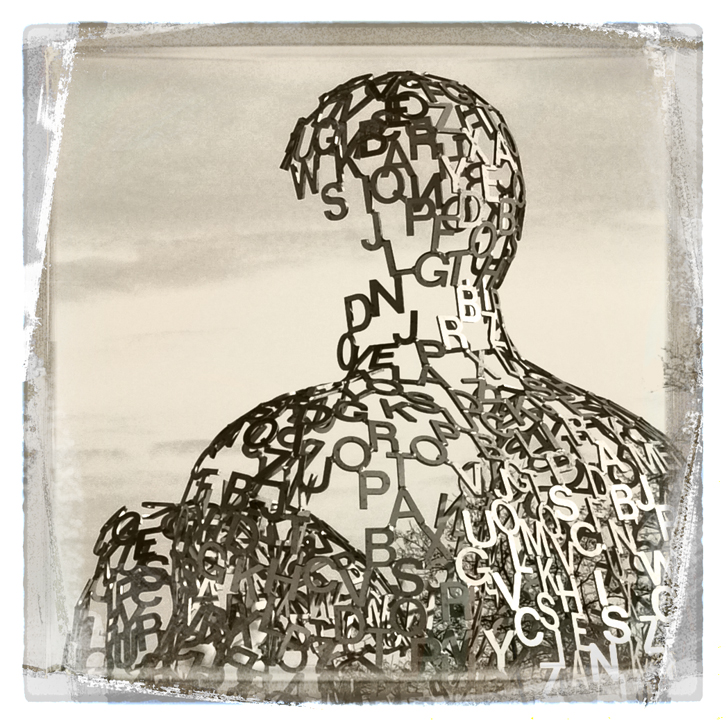
Influential Letters
Our Feelings about Brands
Written by Laura Maaske, MSc.BMC, Medical Illustrator & Medical Animator

I was five years old and I slid to the front seat of the car, looking up at the back-lit letters designating the drugstore into which my mom had stepped. I had spent a lot of time looking at letters: such beautiful things! I asked my dad, “Why do those letters up there look so happy: happy more than any letters anywhere? I’m trying to think how I could make them even happier, but they are perfect.” My dad looked from his Popular Mechanics before answering, “Because they want you to feel like going in. They want you to buy something.” I thought about all the happiest letters I knew: all names on storefronts and advertisements in the paper. I wondered if these letters would be devastated if no one bought something anymore. I felt a crushing, sympathetic sadness for the letters and their unfulfilled desire. At that age, I hid certain food labels –the logos themselves– from the trash because I thought they would be sad if I threw them in the garbage. I asked my dad, “Are there any happy letters that know how to be happy even if you don’t buy something from them?” I remember how my dad laughed ruefully to himself as he thought about that and answered, “No”.
That emotion my dad felt there was so resonating I began to almost hate letters then. Even last year when my five-year-old daughter, Autumn was learning words she said, “Mommy, I see a word: Speedway”. I had not mentioned brand names with my children (I used my own names instead, without really thinking about it, because the real names seemed such a loss of innocence). So for my daughters, reading these brand names was a new discovery. I heard myself responding to my five-year-old that morning, “Be careful now that you can read. Words, especially words on signs, are always trying to make you do what they want you to do.”
David Abram draws attention to the beauty of the letter by revealing its historical power. He seems to find a way to be close to nature without losing his love for letters. But I responded most to his ambivalence: an alphabetic culture has sublimated the love of nature over into the love of letters by looking from the tree down into the book. So, Abram reminds us, there is necessarily a loss of adoration for and involvement in the natural world as a consequence of the abstract letter form which, unlike kanji, doesn’t even reference nature.
What I feel now is, that’s not the whole truth. We know ourselves to be humans living in a culturally pluralistic way, with a long-ranging historical perspective. We see how, over time, humans have imbued almost every available item with power. So we can now begin with more awareness to choose for ourselves our own gods, which symbols are the best, and where to place our worship. It’s not the detached worship of an Enlightenment philosopher seeking objective truth, but the real worship of an Ecstatic who is not a slave to objects and who knows the individual’s proper place in the pantheon.
The beauty in the word is something I am only beginning to see again. I now engage almost as if in conversation with letters and words: I relate and interact to the intention there, rather than observe and walk away. And I’m now in the search for Borges’ Aleph: that central holding place for everything in the universe.
_____ “In the beginning was the Word, ——— and the Word was with God, ——— and the Word was God.” –John 1:1 – –March 8, 2011
???????????????????????????———————————-
Laura Maaske, MSc.BMC, Medical Illustrator & Medical Animator
e-Textbook Designer | Health Communicator | Scientific Illustrator




To me the design of the human organism is a reflection of the universe. It was designed to show us how connected we are to the Universal power(GOD). The body’s repsonsibility during a person’s life is to remind us of that by helping us breathe, eat, and move etc… on a daily basis. If we listen to our bodies we can hear this. If we do not stay still it may be hard to hear it.
Humans are a reflection of the all loving Universal power out there and inside ourselves.
Laura Bahena
Thank you for this comment, Laura, so long ago. It seems to have gotten hidden because I just found it! Best wishes to you!
As a graphic designer, artist and now a Naturopath, I can appreciate your artwork on all levels. Magnificent!
Francine Neidle-Krimsky, ND
Doctor of Naturopathy
Francine, thank you for your kind words. Certainly, the metaphor of levels resonates well with me. It seems there is always another layer to be acknowledged and discovered. I’m just beginning to pull this into my work, and it’s very exciting. I wish the same for you. -Laura